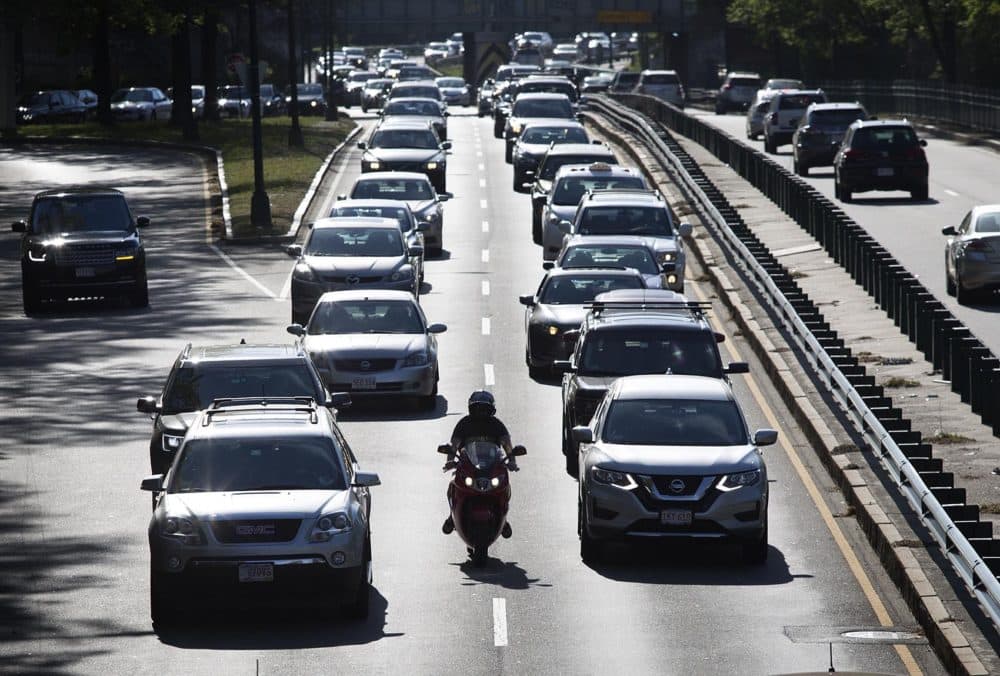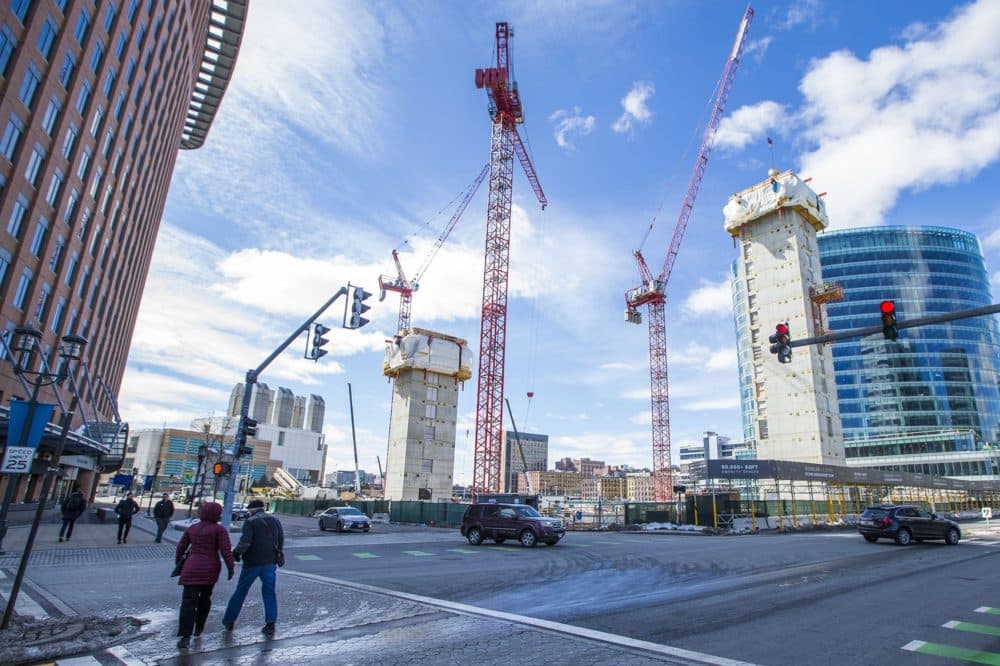Advertisement
Commentary
Boston’s Transportation System Is A Mess. It Doesn’t Have To Be

Boston is growing.
You’ve probably noticed. From the forest of construction cranes in the Seaport District to the new apartments going up in places like my neighborhood of Dorchester, the signs of Boston’s building boom are everywhere.
Since 2010, the city of Boston has added more than 67,000 new residents — nearly two Fenway Parks’ worth — and more than 120,000 jobs.
Whether you are exhilarated by the energy our new neighbors bring to the city, or miss the smaller-city feel, Boston’s growth shows no signs of stopping. The city is projected to add anywhere from 40,000 to 80,000 more people by 2030, along with 50,000 more jobs.
Even as more people are attracted to Boston’s knowledge-based economy and its great neighborhoods, many of us have yet to accept that we live in a growing city. Maybe it’s our innate New England skepticism, or maybe it’s a hangover from the tough years of the mid-20th century when Boston and so many other cities were on the ropes. But until we accept that Boston’s growth is for real, we are not going to be able to plan adequately to accommodate it.
And that’s especially true when it comes to transportation.
We all know that Boston already has more cars than we can handle. The average Boston-area driver spends 60 hours a year in rush hour traffic — that’s seventh-most in the country, according to the traffic analysis firm INRIX. They jam up our streets at rush hour, cause us to fight over scarce parking spaces, and take up room we could be using for housing, parks or other things that would make our neighborhoods better.
... fixing our existing 19th and 20th century transit system won’t enable us to meet the needs of the 21st century.
If the tens of thousands of people who move to Boston all bring their own cars, we're in trouble. More cars on the road directly and negatively impacts our quality of life by creating more urban traffic congestion, air pollution and noise.
We can, however, make a different choice, by giving everyone — newcomers and natives alike — more and better choices for getting around the city. And that starts with making our public transportation system the best it can possibly be.
We have a long way to go. Key MBTA lines are already over their capacity. The MBTA has a more than $7 billion repair backlog. Peeling paint, dripping water and flaking ceilings are common sights throughout the system.
Gov. Charlie Baker and his Fiscal and Management Control Board have begun the difficult task of digging the MBTA out of its hole and planning for the future. But simply fixing our existing 19th and 20th century transit system won’t enable us to meet the needs of the 21st century.
We need a vision for the future of transit that reflects the city that Boston is becoming, not the city it once was. And we need the commitment and resources to make that vision a reality. So far, the Baker administration has focused on reforming the way the MBTA operates and making incremental improvements to our existing system. That’s important, but it hasn’t yet translated into big changes in the lives of transit users. And it’s a far cry from what is necessary to build the kind of transit system we need to accommodate the region’s continued growth.

A good first step is to get the most out of the infrastructure we already have. In Roslindale and Everett, new dedicated bus lanes on city streets are breaking the morning log jam and speeding up transit trips. According to LivableStreets Alliance, there are more than a dozen other locations in the city where bus lanes or traffic signals that give priority to buses could make our bus system work better — enticing more people to skip traffic and ride.
We can also make better use of our vast rail network. The advocacy group TransitMatters has proposed converting our commuter rail system — which is set up to bring workers from the suburbs into Boston in the morning and back home again in the evening — into a true regional rail system that provides reliable, frequent service throughout the day. That’s a better match for today’s transportation needs, especially those of reverse commuters, people who start work early or leave late, or those who travel for reasons other than work.
Getting the most out of our existing system is important, but we also need to make the big investments that can support our current and projected growth.
We need a vision for the future of transit that reflects the city that Boston is becoming, not the city it once was.
The traffic nightmare in the Seaport District shows what happens when we fail to build adequate, high-quality transit service into growing neighborhoods right from the start. Projects like the proposed West Station in a soon-to-be-redeveloped area of Allston can serve as a foundation for the city’s transit-oriented growth. And whether it is connecting the Blue and Red lines or finally sewing together the two halves of Boston’s rail network, we need to consider big, long-overdue projects with the potential to unlock benefits for generations to come.
None of this will be cheap, and in the wake of the Big Dig, we all have reason to be concerned about costs. A commitment to a better transit system must be matched by a commitment to get the most out of every dollar spent. That’s true regardless of whether taxpayers, neighboring businesses or transportation system users — or some combination of all three — pick up the tab.
The MBTA is accepting public comments through mid-October on its vision for the T by 2040 (it’s known as the Focus 40 plan). Whether you are concerned about the region’s long-term future or are just fed up with your daily commute, it is worthwhile to read the plan and share your feedback.
The choice facing Boston is clear: We can spend the next decade mired in increasingly bitter complaints about traffic and parking. Or we can spend it building a transportation system that’s worthy of the great city Boston already is, and the incredible city we know it can become.
